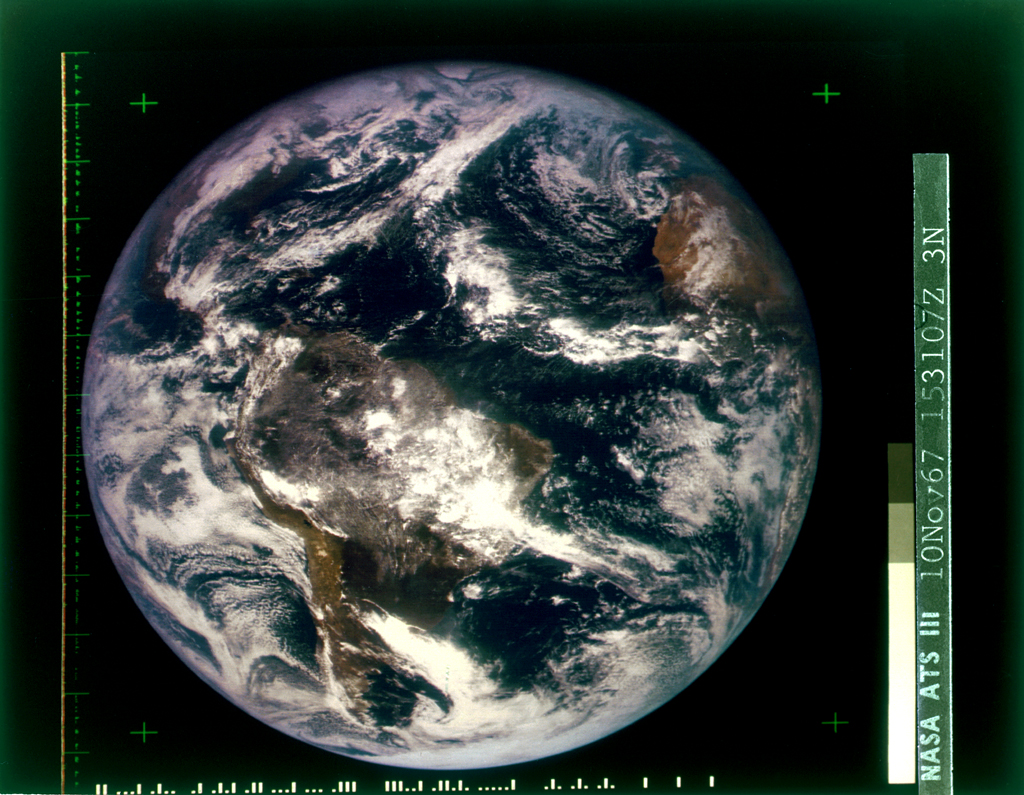
Visual Essay
Technology can help us to connect with our surroundings. Think about the microscope: it revealed ecosystems beyond our visual reach allowing us to look at the smallest inhabitants of our planet. Space exploration did quite the opposite and helped us to look at ourselves from afar.
Like sonograms of an unborn child, pictures of planet Earth from outer space show us a glimpse of a world that is fragile and in need of our protection. Just as we monitor the growth of a fetus, we must monitor the health of our planet and take steps to preserve it for future generations. Join us on a space voyage where we take a look at five impressive photographs of Earth.
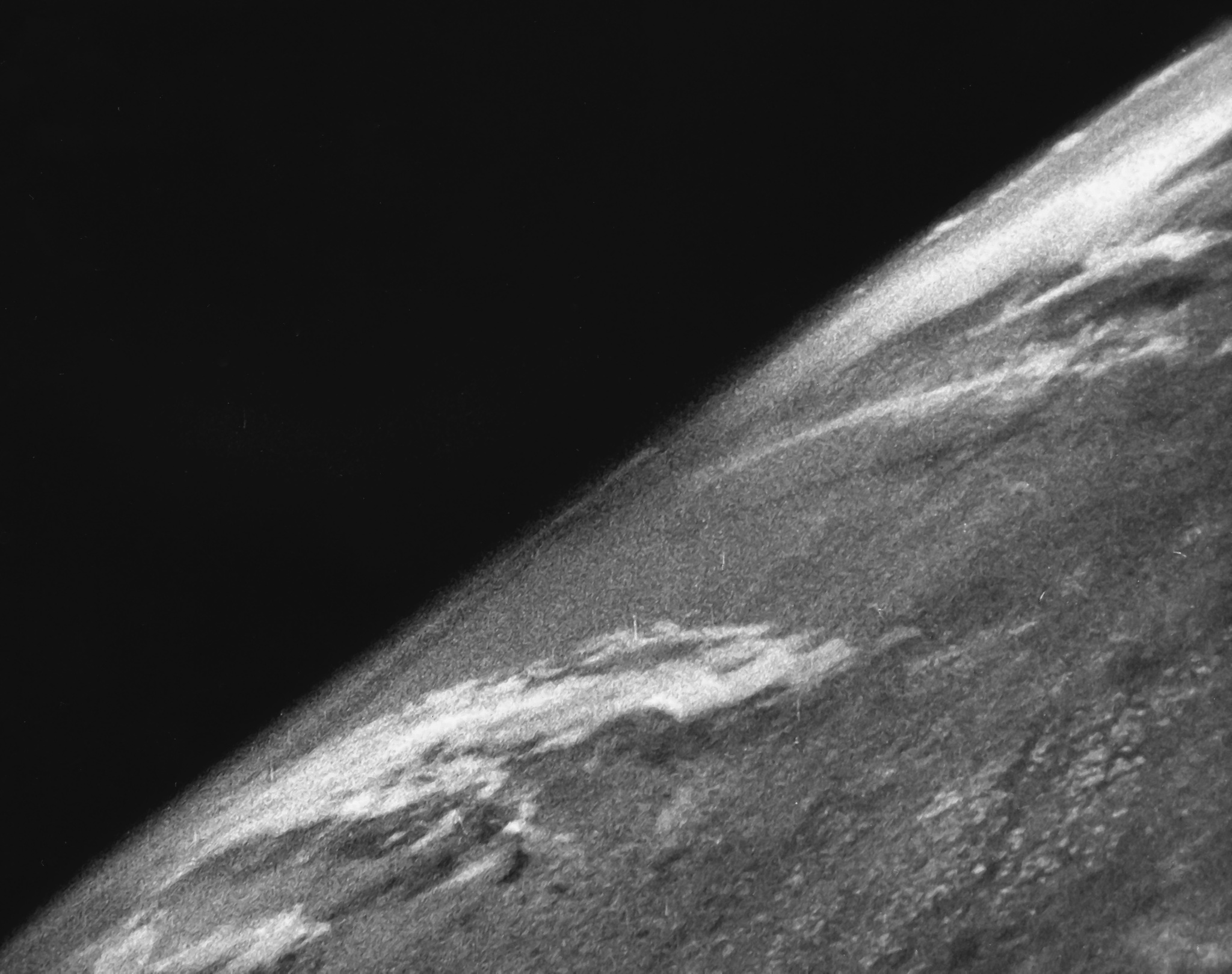

In October of 1946, the V-2 No. 13 rocket became the first object to take a photograph of Earth from outer space. But only four years later, in 1950, the public was finally able to lay eyes at our planet of residence. All pictures taken by the space vehicle were put together and presented as a timelapse moviereel: Earth's first sonogram.
Photo credit: U.S. Army - White Sands Missile Range/Applied Physics Laboratory
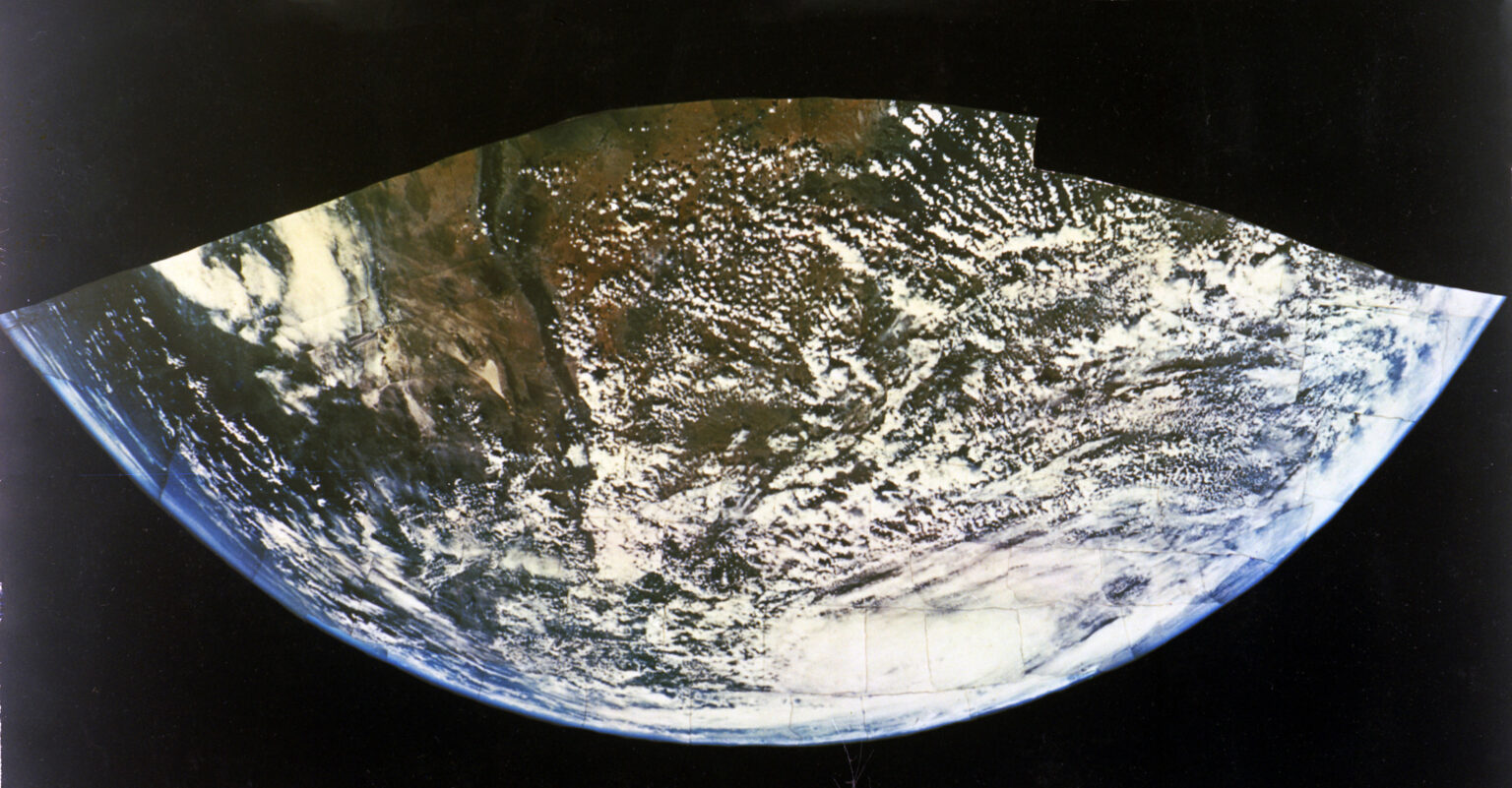
We can finally admire planet Earth in color. On October 5 in 1954, an Aerobee rocket captured 117 images of Earth and compiles it into the photomosaic you see above. If you look real closely, you can see the borders of each photograph shaping our home planet.
Photo credit: Dr. Otto Berg - U.S. Naval Research Laboratory



On November 10, 1967, the first full-color image of planet Earth has been taken…by mistake. NASA's ATS-3 satellite was not intended to make photographs of Earth. In fact, the weather and communications satellite was being tested to photograph stars. The picture has been used as the cover of the Whole Earth Catalog of 1968.
Photo credit: NASA
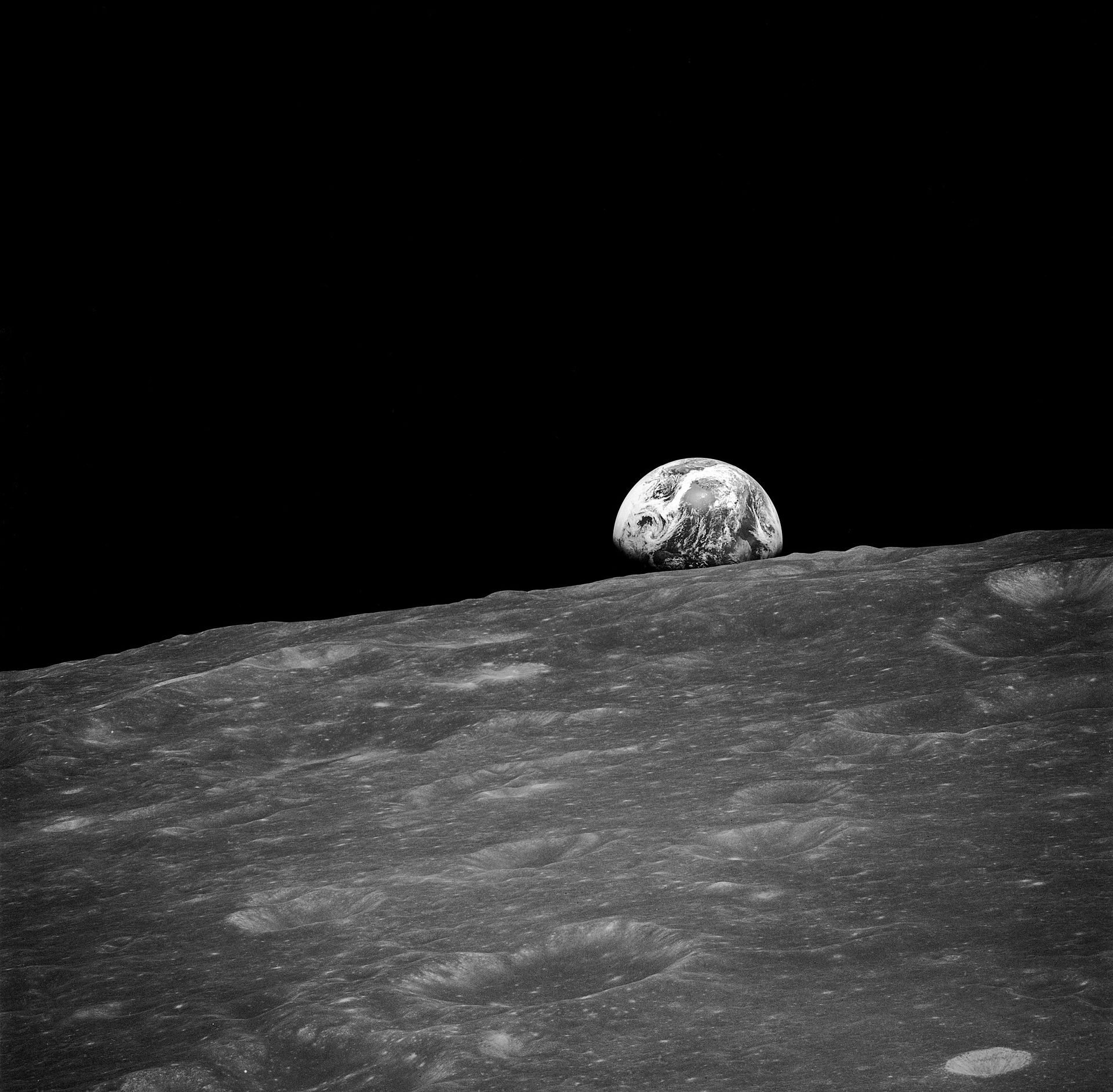
The Apollo 8 was the first crewed spacecraft and also the first human spaceflight to reach the Moon. The three astronauts did not step foot on it, but orbited the Moon for about ten times. Frank Borman, one of the crew members, decided to take a picture before safely returning home to planet Earth.
Photo credit: William Anders - NASA Apollo Archive

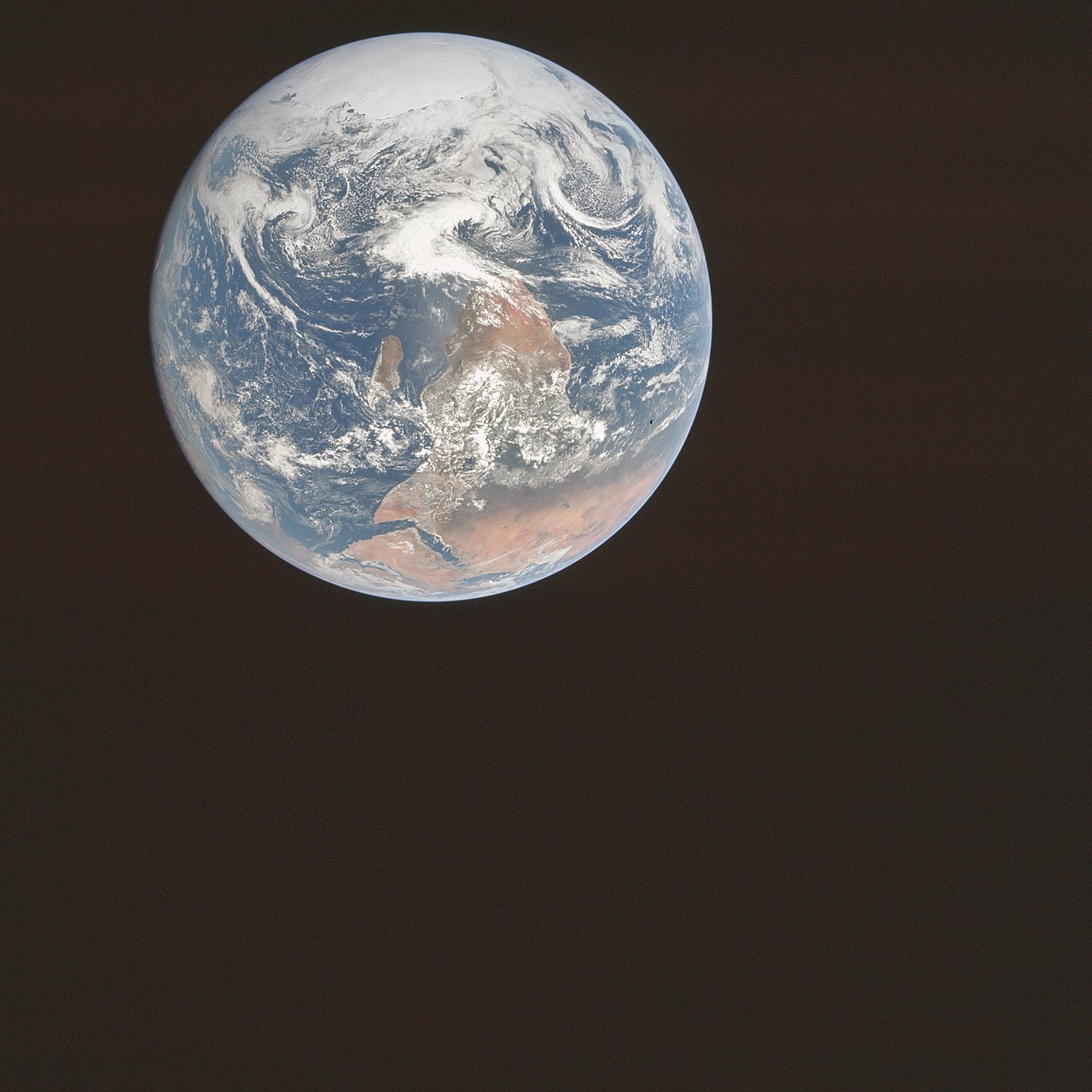

Perhaps, the most iconic and most reproduced depiction of planet Earth to this day. Taken by the Apollo 17 crew on December 7, 1972, the Blue Marble became a symbol of the environmental movement. As the world was taken over by a surge of environmental activism, the depiction of Earth's fragility, vulnerability, and loneliness shifted the public perception. It became a lasting reminder to take care of our home planet.
Photo credit: Project Apollo Archive